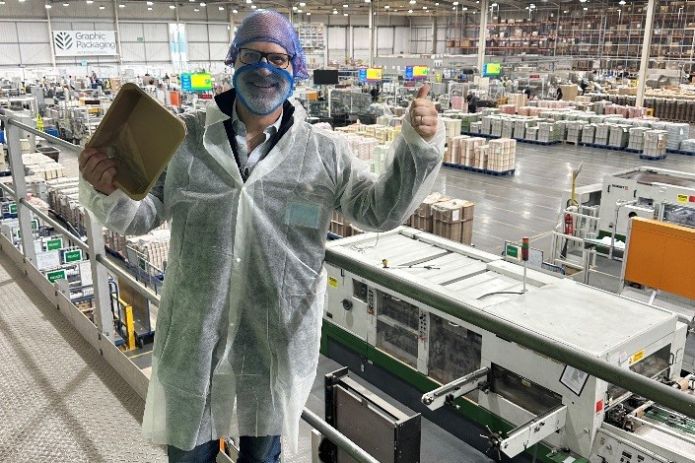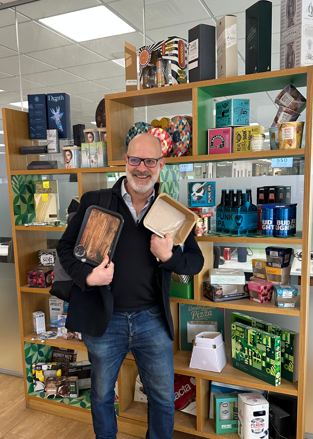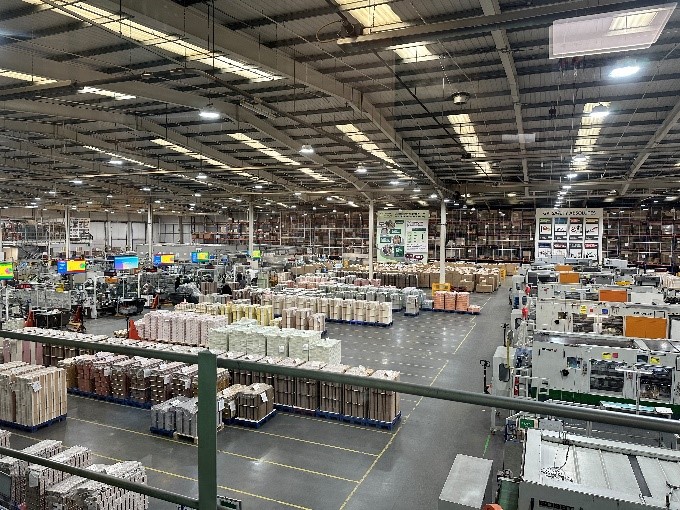
The new US administration has declared war on anything considered “woke” and the media is full of stories about a backlash against so-called woke culture. We still however hear from many companies that are continuing down a path of enhancing the sustainability of their businesses, driven by shifting regulatory requirements and consumer preferences. Graphic Packaging (GPK), a leader in the paper packaging industry, is arguably at the forefront of a trend towards more sustainable packaging.
During a recent visit to their Bardon packaging innovation and manufacturing facility near Birmingham, I gained insight into how GPK is pushing the boundaries of paper packaging, facilitating a more durable future and a stronger business.
Transformative strategies and investment insights
Graphic Packaging is coming to the end of a significant capital investment and business transformation cycle, which looks set to drive a positive cash flow inflection. The construction of a massive 550 kilo tonnes per annum (ktpa) Coated Recycled Board (CRB) machine in Kalamazoo, Michigan, couples with the closure of three proximate mills. This strategic move allows GPK to offer high-quality recycled board at extremely competitive prices, directly challenging the bleached virgin board market. They are building another similar size CRB machine in Waco, Texas for completion later in 2025, and plan to close a further two smaller less efficient paper mills. Together these projects should increase both their earning power and reduce production costs materially.
GPK acknowledges the looming concerns of consumer weakness amidst economic uncertainties, particularly in the US. However, this strategic shift and the end of an investment cycle should facilitate significant expansion in free cash flow over the coming years, which they intend to use to return cash to shareholders – largely through share buybacks. By broadening their packaging across new product areas, they also anticipate the business to be less cyclical in future.

Source: Janus Henderson Investors
Innovation at the heart of operations
The site visit to Bardon was a deep dive into the innovative strides GPK is making. The facility showcased how regulatory changes, such as the European Packaging and Paper Waste Regulation, alongside corporate decarbonisation commitments and shifting consumer preferences, are driving the packaging industry towards more sustainable solutions. The presentations highlighted the integration of cutting-edge technology in the manufacturing processes, which include high-speed ink printing and precise carton folding operations, capable of producing over a billion units annually. The people I met had an almost obsessive focus on customer satisfaction. It was clear that their intent is to take market share not by offering sustainable products per se, but by offering the best service and products to solve customer problems, to help their customers (consumer goods companies) make more money.

Source: Janus Henderson Investors
Shifting gears
Graphic Packaging’s strategic manoeuvres and innovative thrusts are transforming the landscape of the packaging industry. By leveraging state-of-the-art technology and responding proactively to environmental regulations and offering competitive solutions to their customers, GPK is not only enhancing its business model but also reinforcing its commitment to sustainability.
My visit to their Bardon facility was a testament to the potential of innovative biomaterial-based packaging solutions in driving future growth. It seems that sustainable growth and sustainable packaging can go hand in hand. As one of the people I met said… “It’s an exciting time to be in packaging!”
EV/EBITDA: A valuation ratio calculated by dividing enterprise value (EV) by earnings before interest, taxes, depreciation and amortisation (EBITDA). EV/EBITDA is used to assess a company’s total value from the perspective of a buyer, taking into account any debt or cash levels, in addition to its stock price. Cyclical: Companies that sell discretionary consumer items (such as cars), or industries highly sensitive to changes in the economy (eg. mining). Free cash flow (FCF): Cash that a company generates after allowing for day-to-day running expenses and capital expenditure. It can then use the cash to make purchases, pay dividends or reduce debt. Return on equity (ROE): A company’s net income (income minus expenses and taxes) over a specified period, divided by the amount of money its shareholders have invested. It is used as a measurement of a company’s profitability, compared to its peers. A higher ROE generally indicates that a management team is more efficient at generating a return from investment. Share buybacks: Where a company buys back their own shares from the market, thereby reducing the number of shares in circulation, with a consequent increase in the value of each remaining share. It increases the stake that existing shareholders have in the company, including the amount due from any future dividend payments. It typically signals the company’s optimism about the future and a possible undervaluation of the company’s equity.